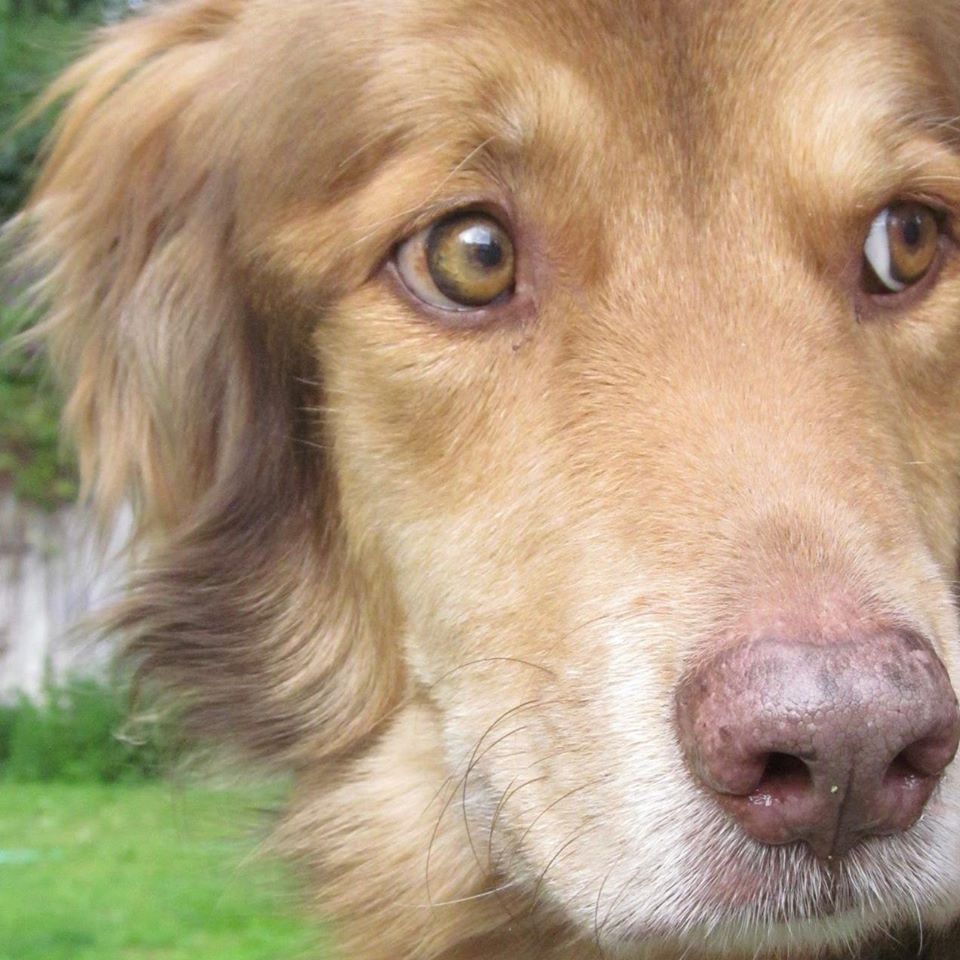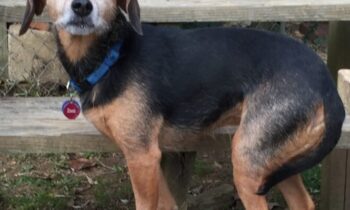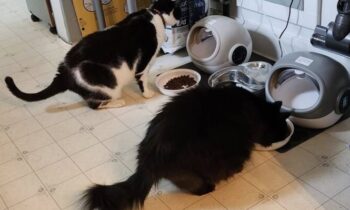

We’re just coming out of a week of extreme heat in the Pacific Northwest, where I live. In my city, 11 deaths have been reported so far, with autopsies pending to confirm the cause as heat-related. The victims were of all ages, in their 30s to in their 80s. Not all were elderly, but most did live in apartments without air conditioning.
The human loss is staggering, but what about our companion animals?
My dog is not elderly—he’s 10-plus, as far as we know. He was a stray picked up by animal control with no indication where he came from. No one ever claimed him. He’s healthy. His yearly examination about four months ago revealed some dental issues, for which he had surgery six weeks later—the removal of several teeth and a thorough cleaning.
At our house, we do have air conditioning, but only in one room, so I knew that staying cool “enough” was going to be the goal when forecasts predicted record-breaking temperatures that could last more than a week.
The heat wave did break records. In my city, one day had the highest temperature ever recorded here . . . in history. We were lucky: We did not lose power as some neighborhoods did (mostly for short times, like an hour) while the power company did “rolling blackouts” to prevent further unintentional outages resulting from exhausted equipment. For some, those unplanned outages lasted longer than an hour.
We were all asked to cut back on non-essential power use, especially during certain hours, and apparently we responded well. As the temperatures dropped (almost imperceptibly), the planned outages were minimized and, thank goodness, eventually canceled.
The worst problem was that the overnight temperatures never dropped enough for our houses to cool off. It’s just not possible to cool the inside when, at sunrise, the outside temperature matches the normal high temperature for that day on the calendar. Many residents got up and out before sunrise to water their yards, but there was not much point in “opening up” the house. It was already as hot outside as it was inside—too darn hot.
How did my dog do? Very well, I’m relieved to say.
First, I credit his good health. Second, his experience in our home had prepared him. He’s lived here for a decade that included several summers when we stayed cool in the AC in that one room together. Last year, during the pandemic, I often chose the AC option because I could, for simple comfort, if not a matter of survival.
I had a crate set up in that room, the same size as the crate for my dog in our regular bedroom. My dog is not only “used to” being crated, he likes his crate. He’s never “made” to sleep in it; he chooses to sleep in it, very often, even when “on the bed with the humans” is another option.
So . . . one secret about crate training is simple: The crate should be a constant in the dog’s life, a place he always feels safe and comfortable, and it is never associated with punishment.
One “training” exercise we’d worked on last summer was a quick response to the cue “Kennel!” (Call it whatever you choose, but be consistent. I think the word “kennel” sounds much more positive than any other words I might come up with.)
Unfortunately, I’d chosen to reward my dog for a quick response to the “Kennel!” cue with food treats—effective, no question, because goldfish crackers were a highly valued treat for him, “human food” he got rarely. He would dash into his kennel, running even from another room.
He got fat from all those human-food treats and, ironically, put on way too many pandemic pounds. (I didn’t; I lost.) He looked like he had swallowed a barrel. Our veterinarian said that he should lose ten pounds! (I was so embarrassed—I have never had a fat dog!) It was all my fault . . . more on that subject later.

Photo by Val Hughes
So although my dog did not “need” to stay in the kennel in that air conditioned room, he had that option and he was comfortable with it. His kennel is the hard style, a #400 Vari Kennel with lots of extra room for a dog his height. A wire kennel might have allowed more air flow, but the Vari Kennel certainly protected the AC room from any fallout of another heat-reduction method we used: soaking the dog with cold water. If you have both options available (wire crates can be relatively inexpensive and they’re easy to store because they fold down), you can try both to see what works best for your dog.
Mine is not a dog who’s fond of bathing, but he’s not afraid of water, so points in his favor when I started to soak him down. He found the best spots in our AC room to lie: When soaked, he would lie right in the air flow of the fan—smart boy! I never had to “make him” do that. He did what worked and was rewarded by feeling better. It made me happy.
He’s got a regular schedule and I decided to stick to it. For him, I think, that structure worked: He knew what to expect. Instead of “yard time,” when he could wander outside undirected, he got “hurry-up-to-eliminate time.” He fully cooperated, as I offered him a reward he valued highly: ice-cube treats!
Hydration is as important for our animals as it is for us humans, so adding to his water intake was critical. I soaked his kibble (in the refrigerator) and added more water to it before I fed him. He’d always drink it all, the kibble soup.
The ice treats were an inspiration. (I thank my sister for reminding me, in the first days of excessive heat, of that favorite of my dog’s!) Adding pieces of his kibble to every ice cube—made in an ice-cube tray that produced ice cubes appropriate to his size of dog—made those treats irresistible. When I wanted him to hurry up outside, I’d say, “Ice treats!” happily, and in he’d run. Yes, even in the heat, he chose to run!
If you don’t already own ice-cube trays that make ice cubes appropriate to your size of dog, now is the time to get some—try a dollar store! Fill with your dog’s favorite food treat (if losing weight is not an issue for your dog) and add water. Canned food, even. Now’s the time for your dog to learn how delicious ice-cube treats can be!
If you don’t already own a kiddy pool (or two), they’re not expensive—check for sales this time of year. Introduce the pool not filled with water. Initially, do what works best to convince your dog that getting wet in a shaded pool can be fun and cooling!
Will your dog cooperate with being soaked with water? (Don’t use a spray bottle if the dog has ever been “disciplined” with one!) I just dripped cold water directly on my dog’s head and back, and used a soaking towel on him, inside the house, too. Will your dog stand under a sprinkler or let you use a hose to spray above him? Find the best way to wet down your dog easily . . . before you need to do that!
To add to your dog’s comfort and safety if you can’t be in AC constantly, look into hot-weather dog boots for dogs who walk on pavement or any hot substrate, or research “canine cooling jackets” and purchase one for future use. Introduce boots or jacket long before they’re needed and have the dog “practice” in them regularly. Be positive!
For recommendations on keeping your dog cool, comfortable, and healthy in extremely hot conditions, ask your veterinarian now—before another heat wave!



